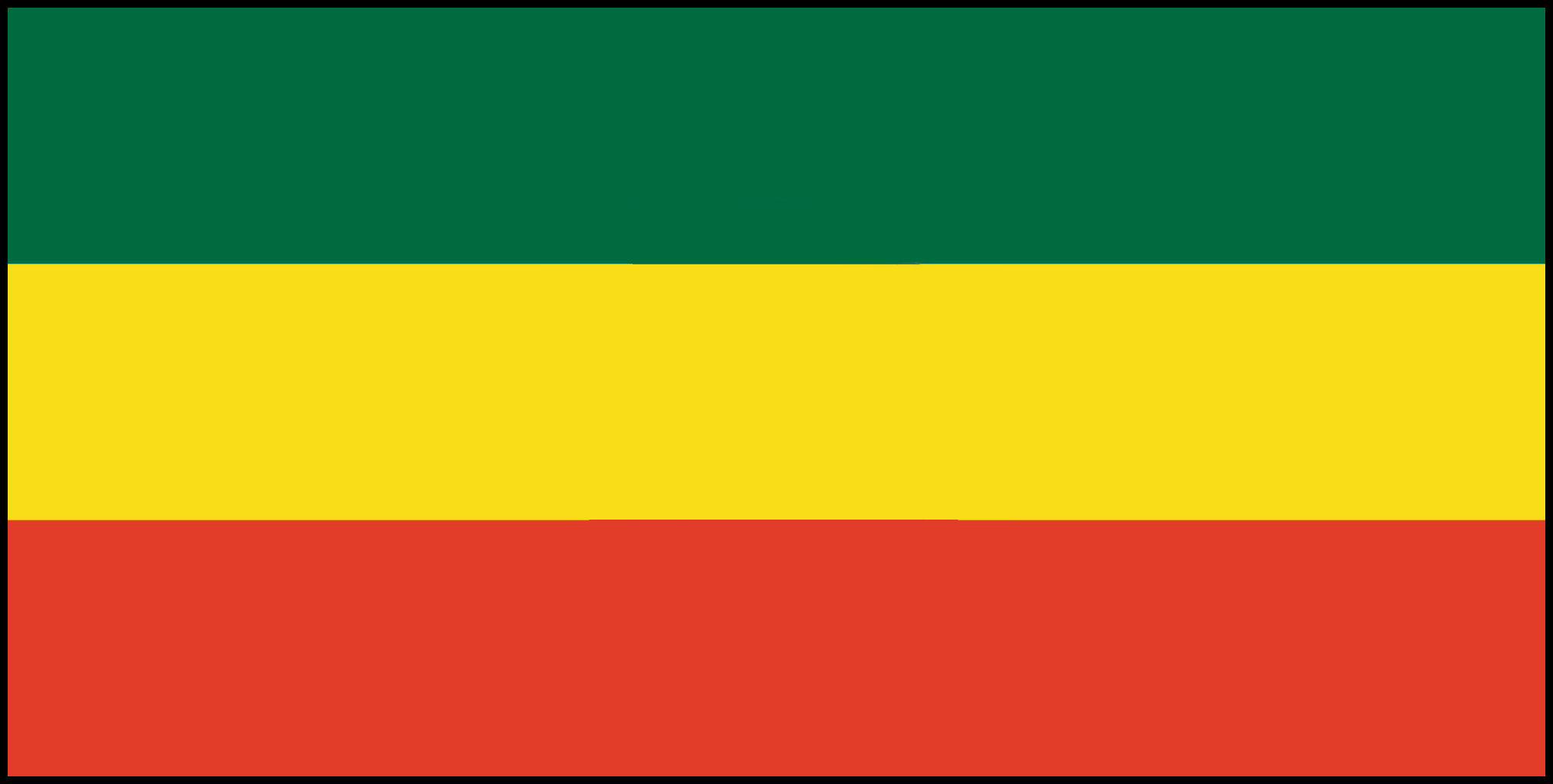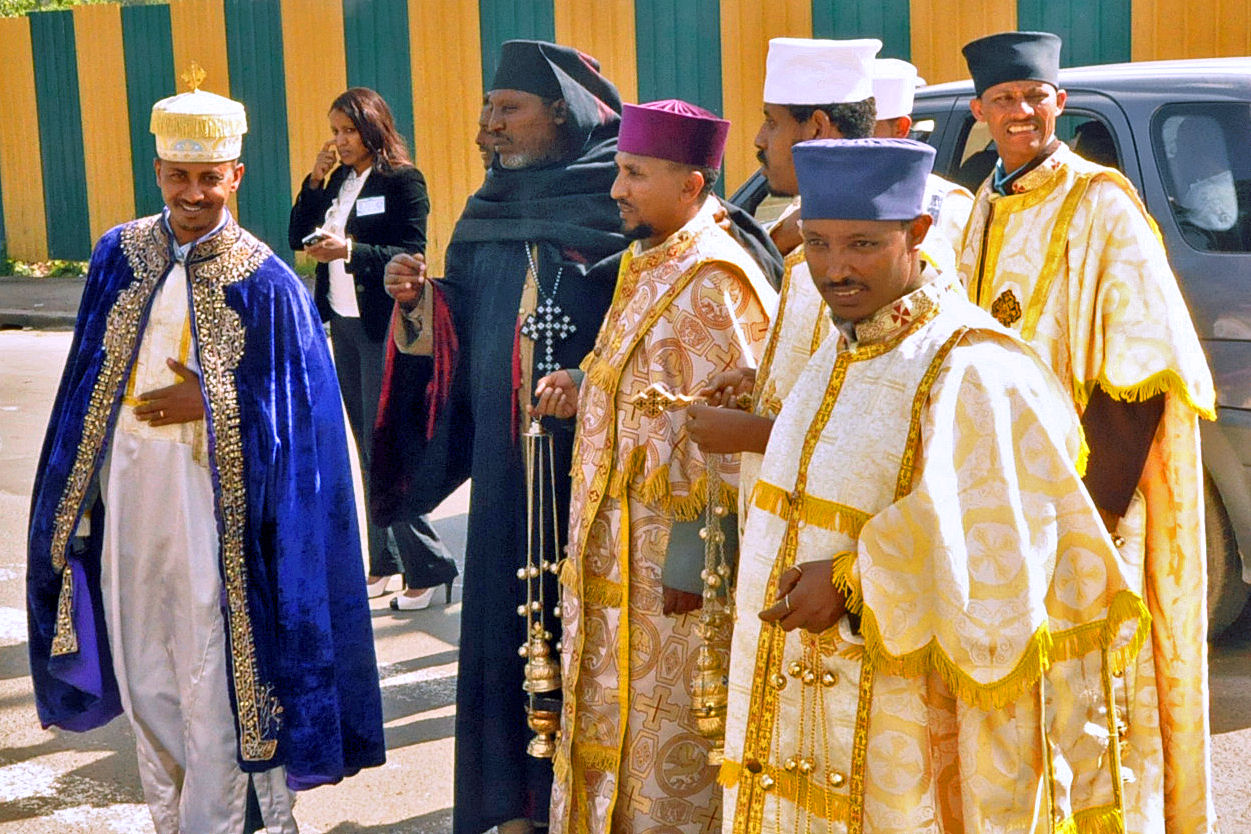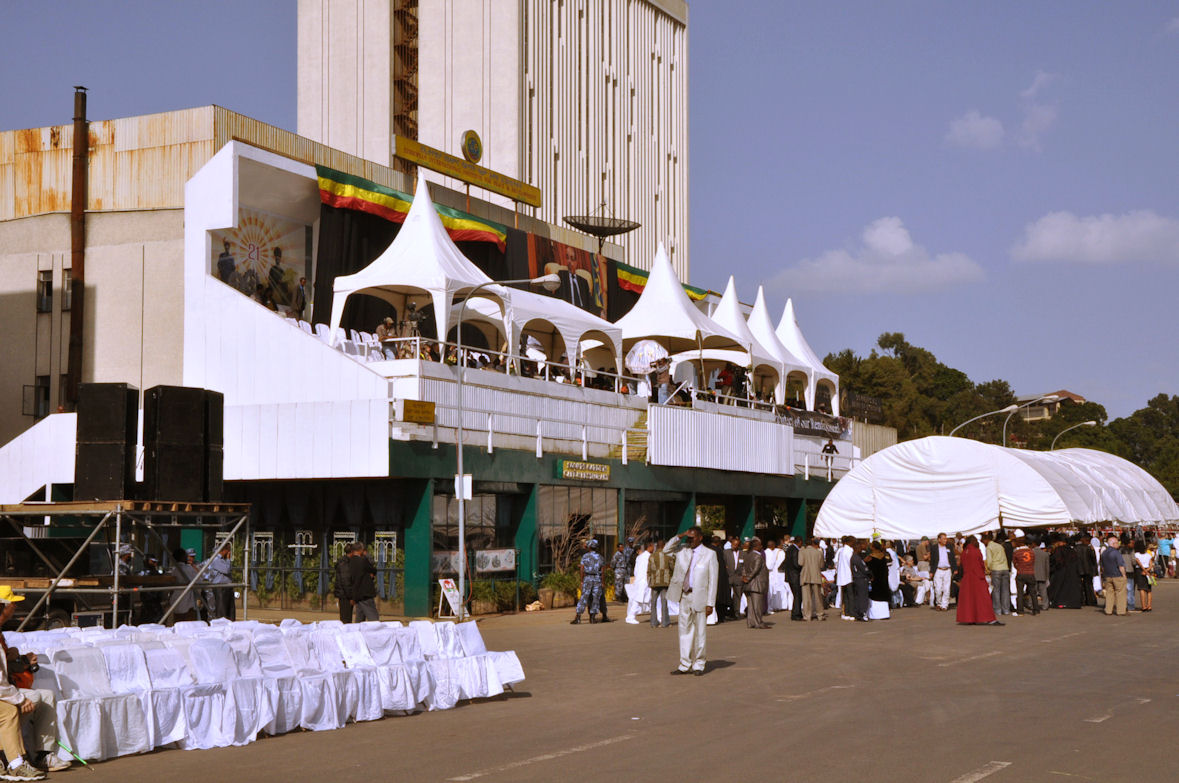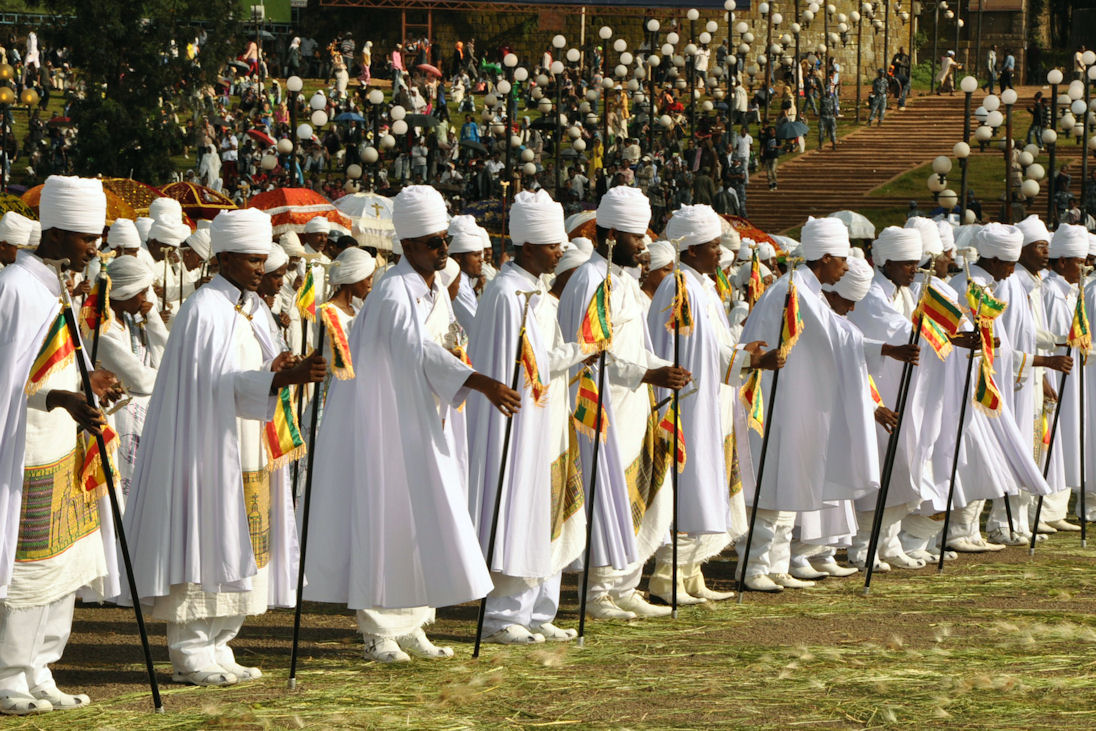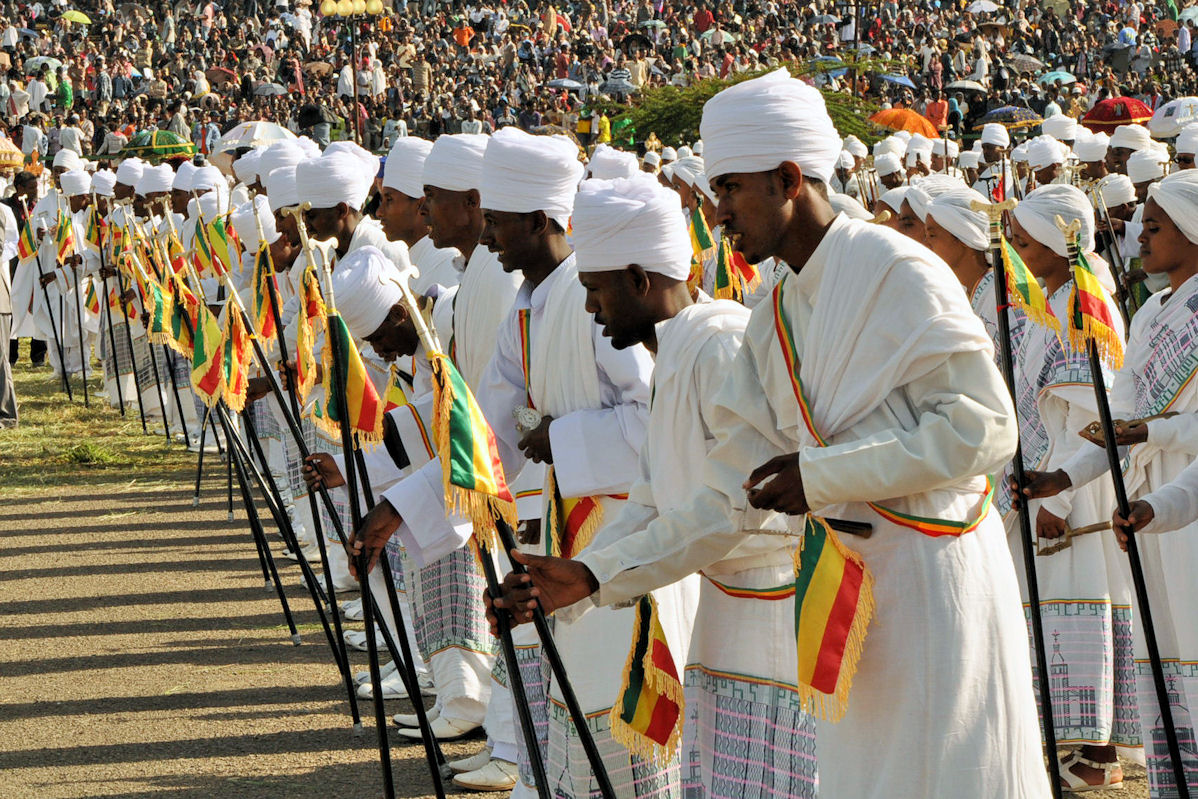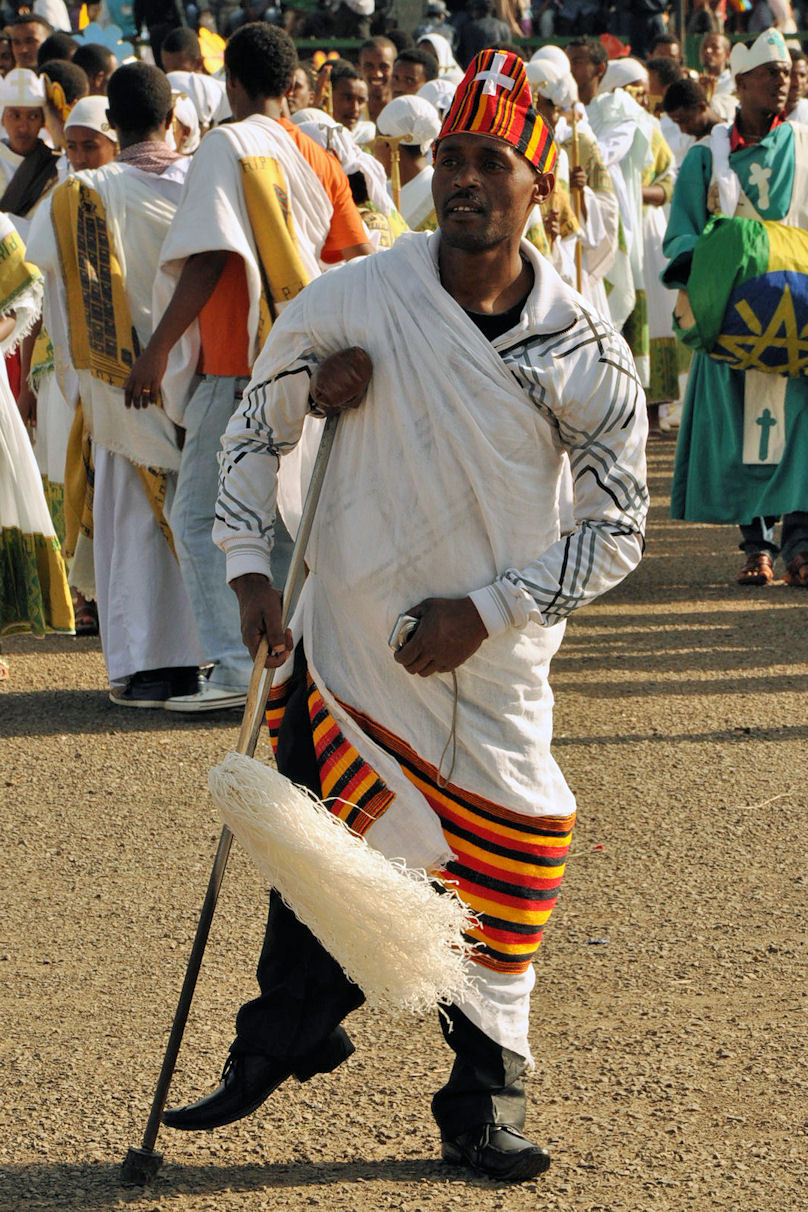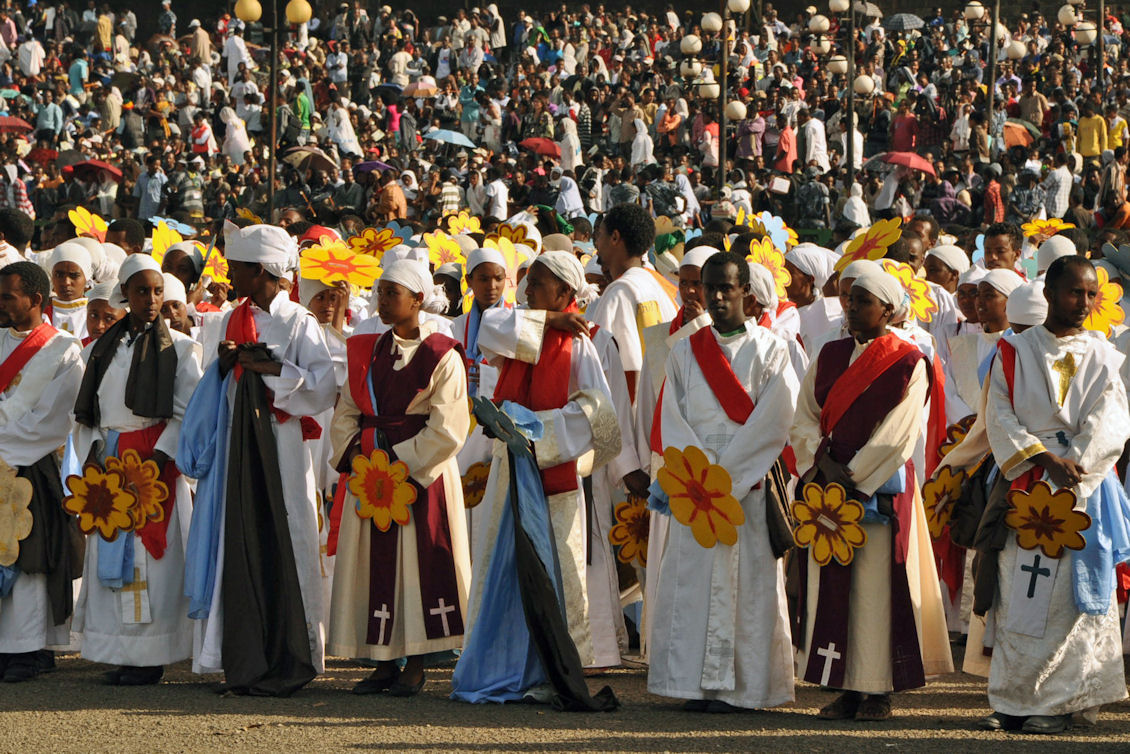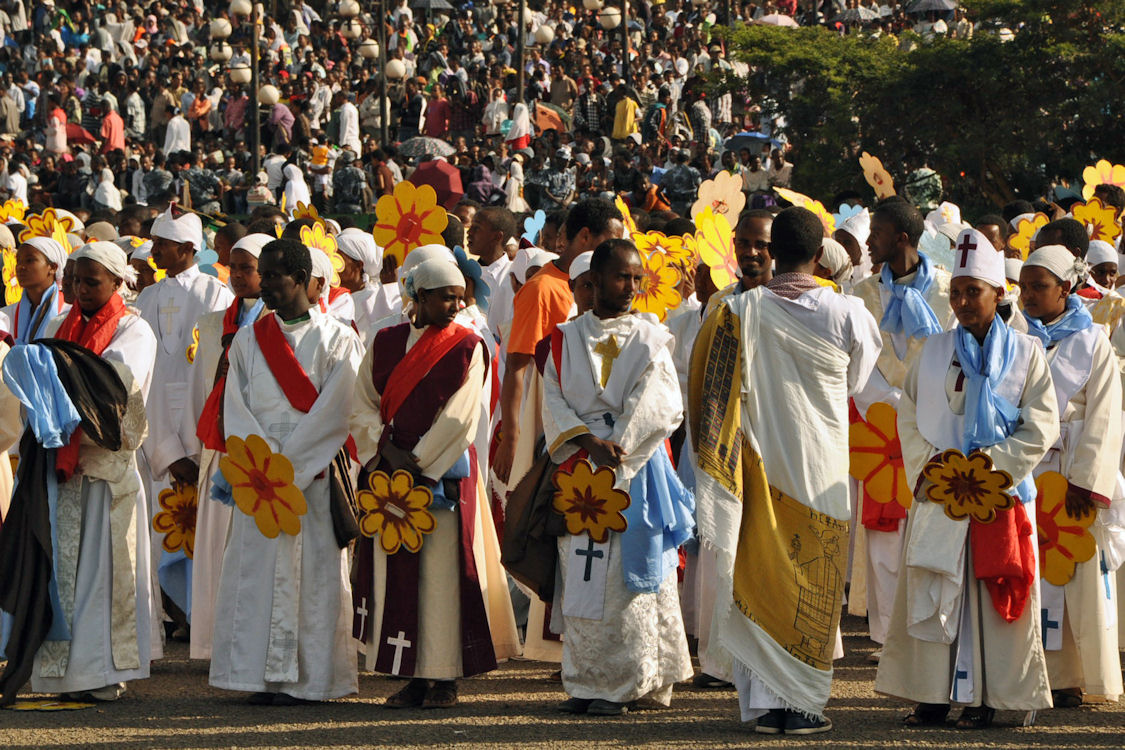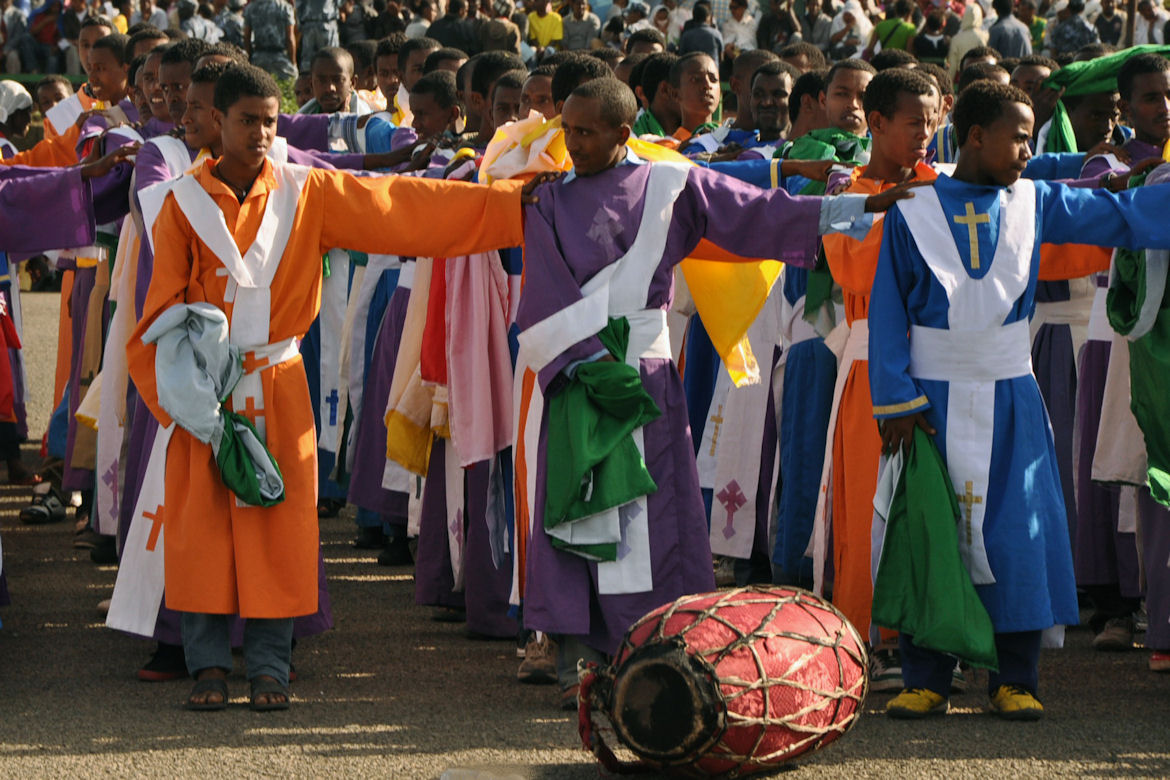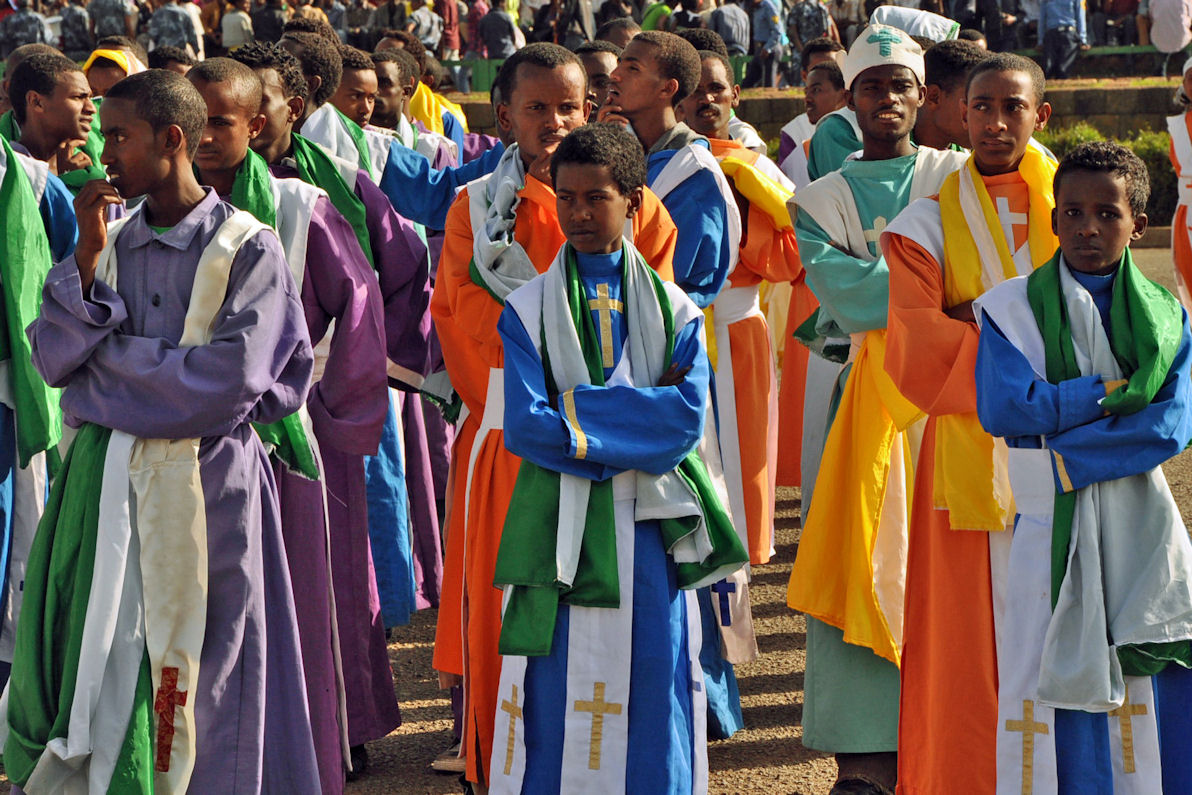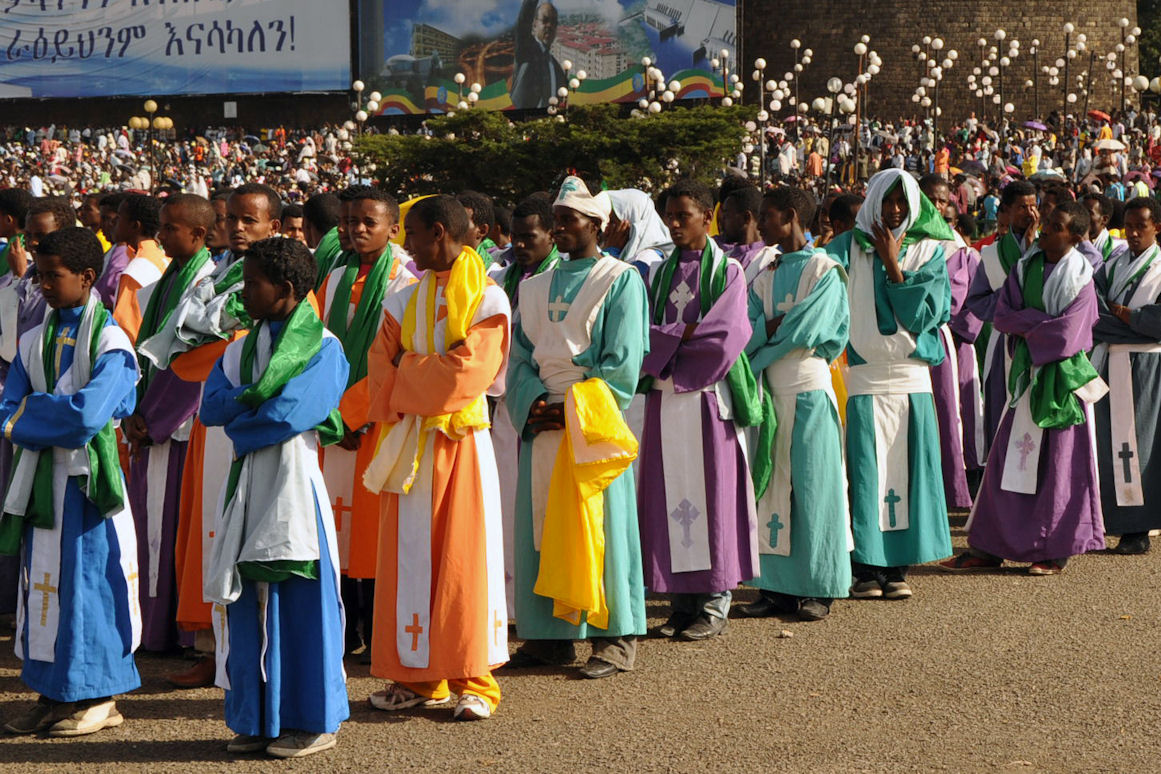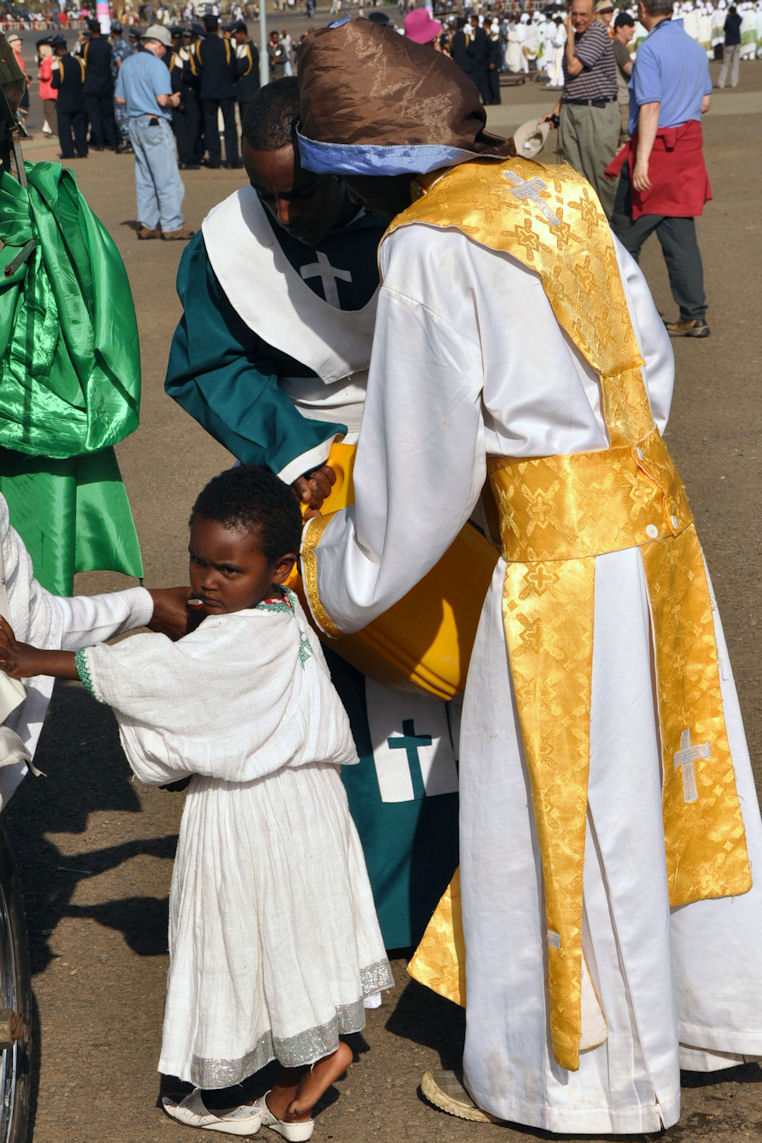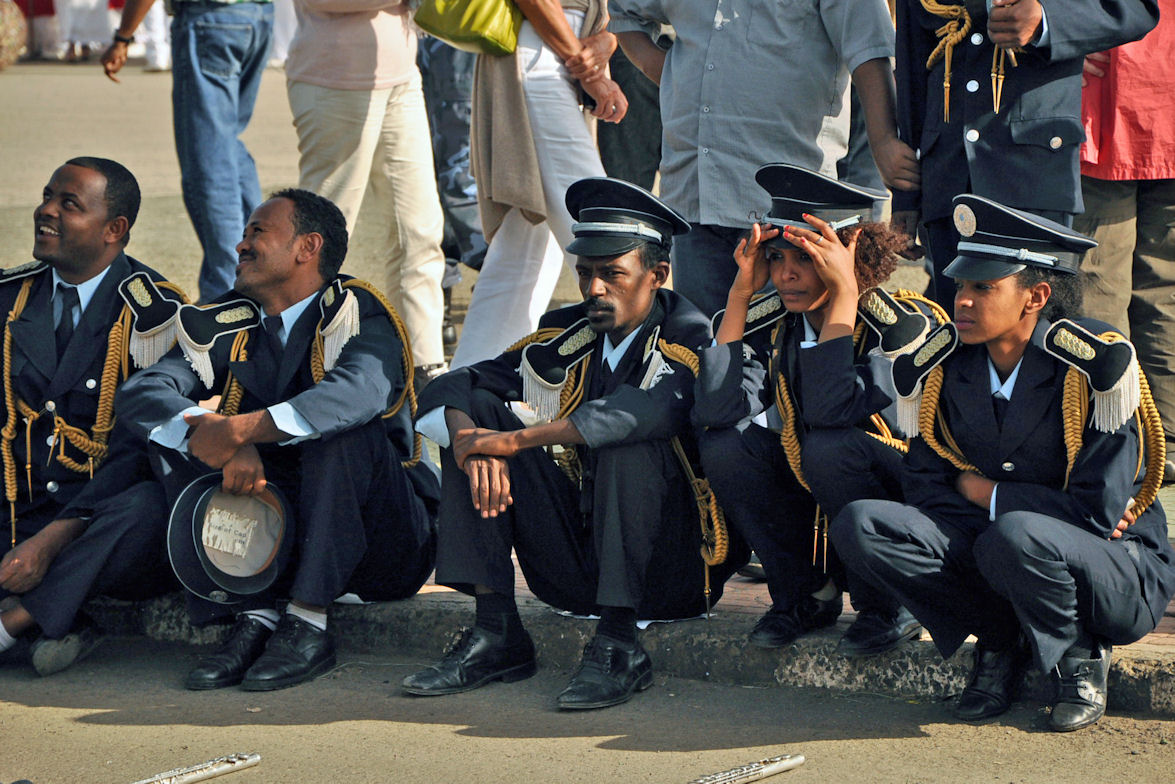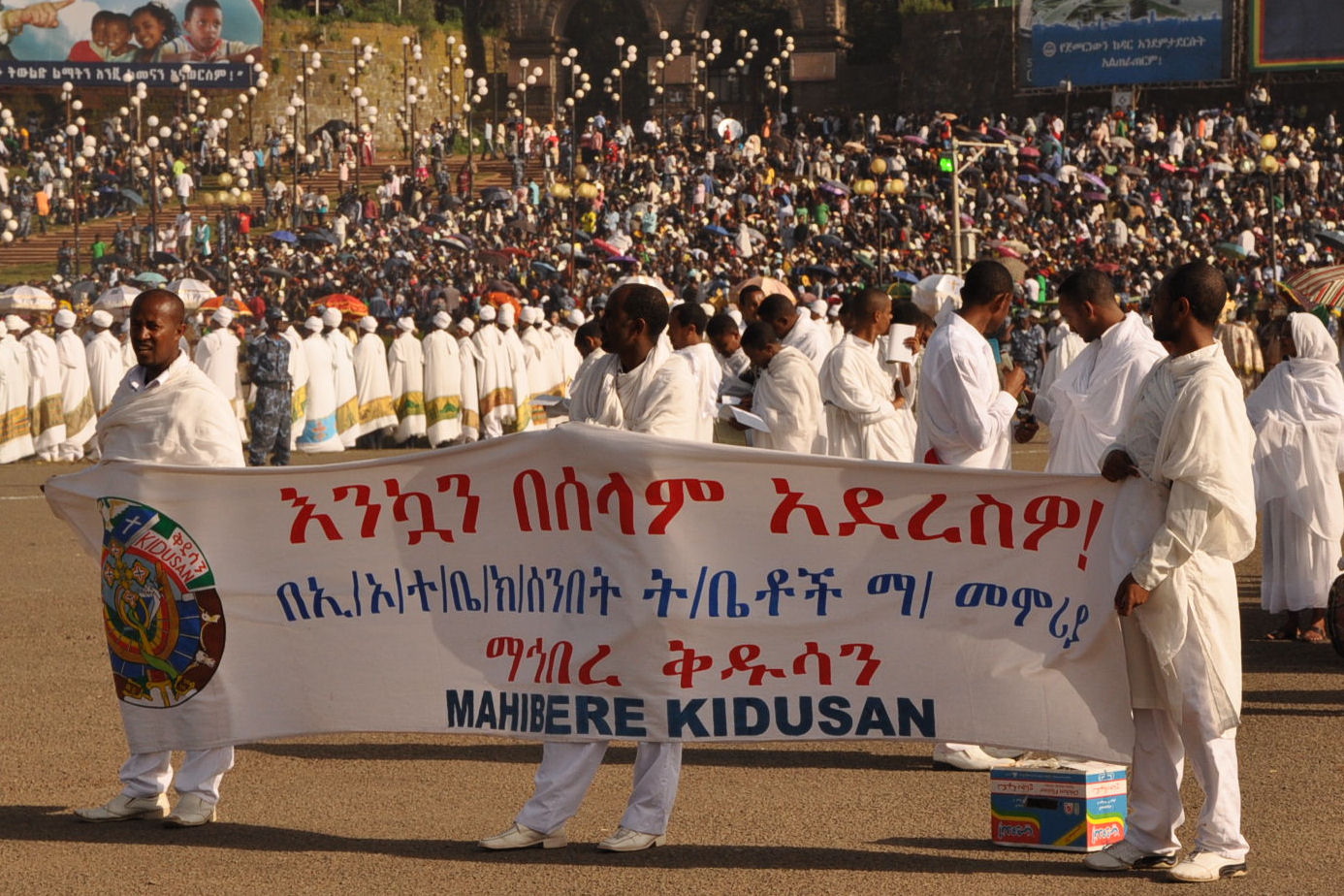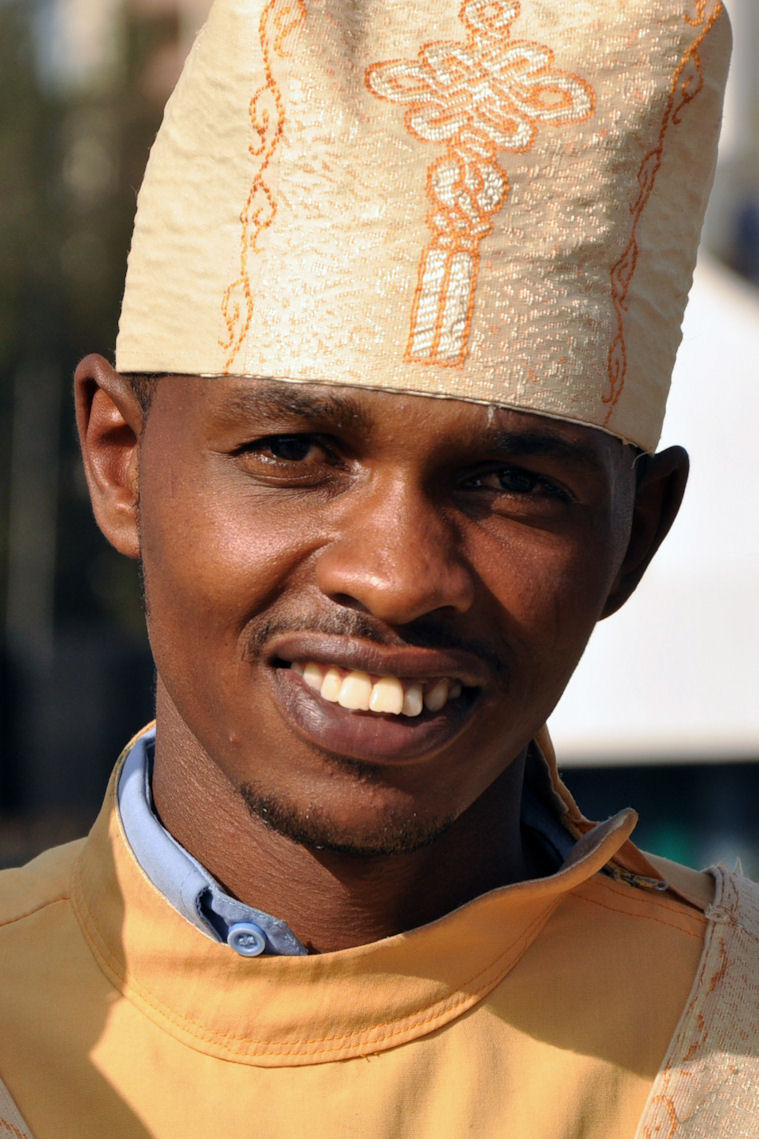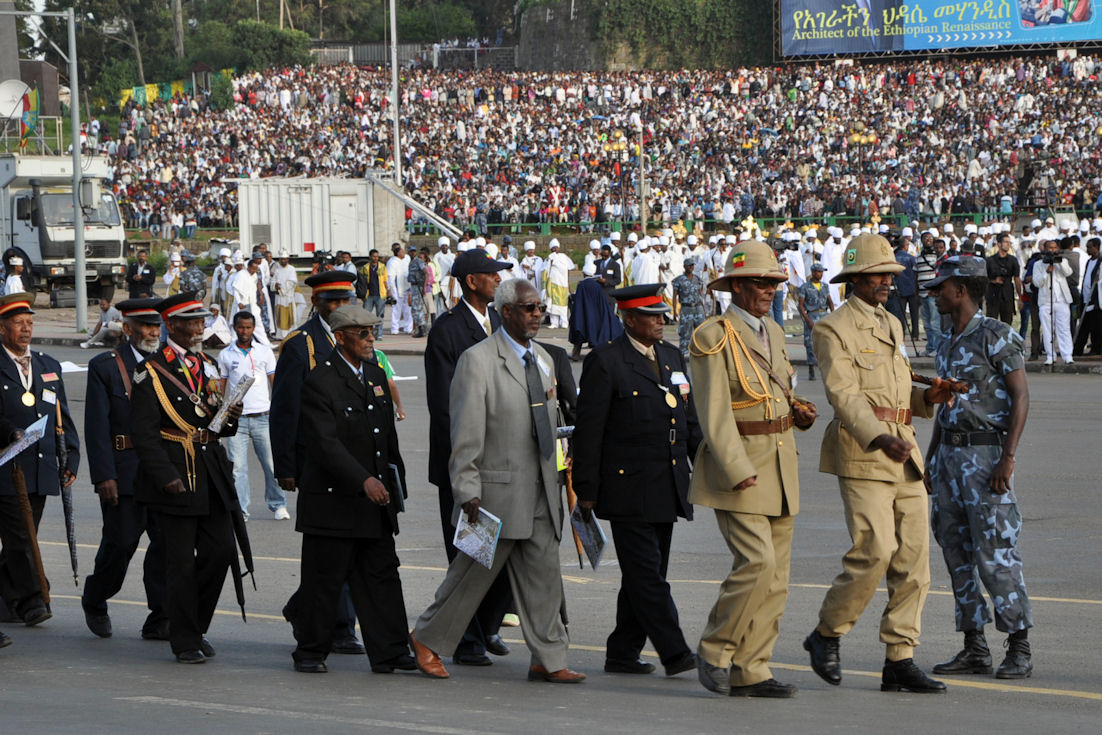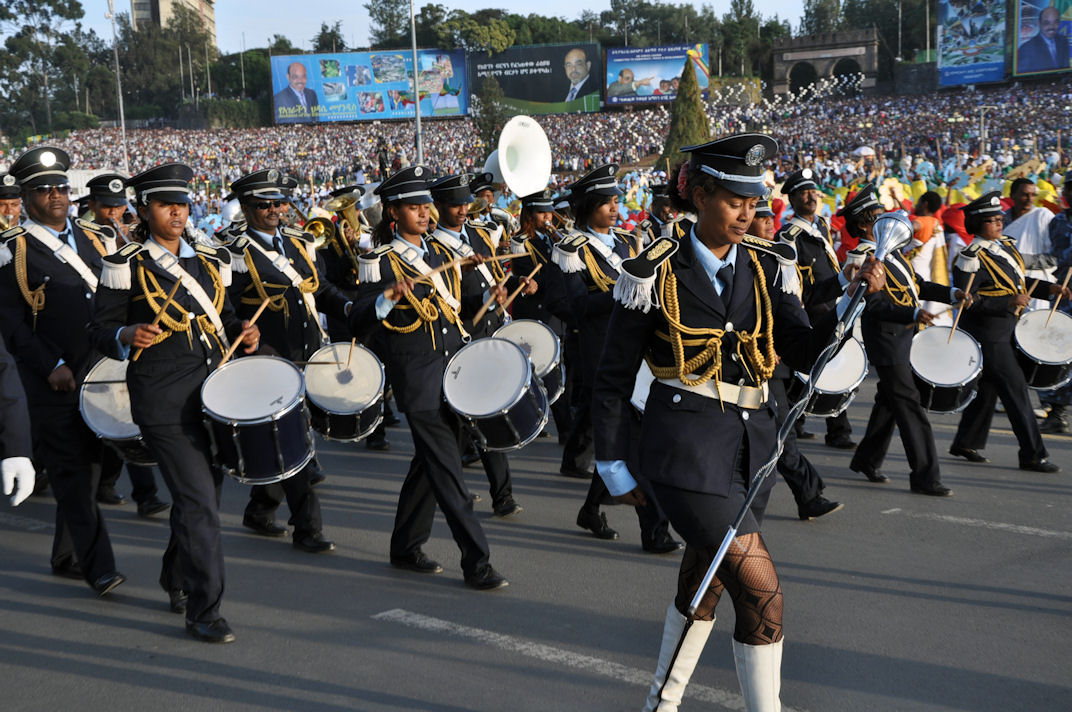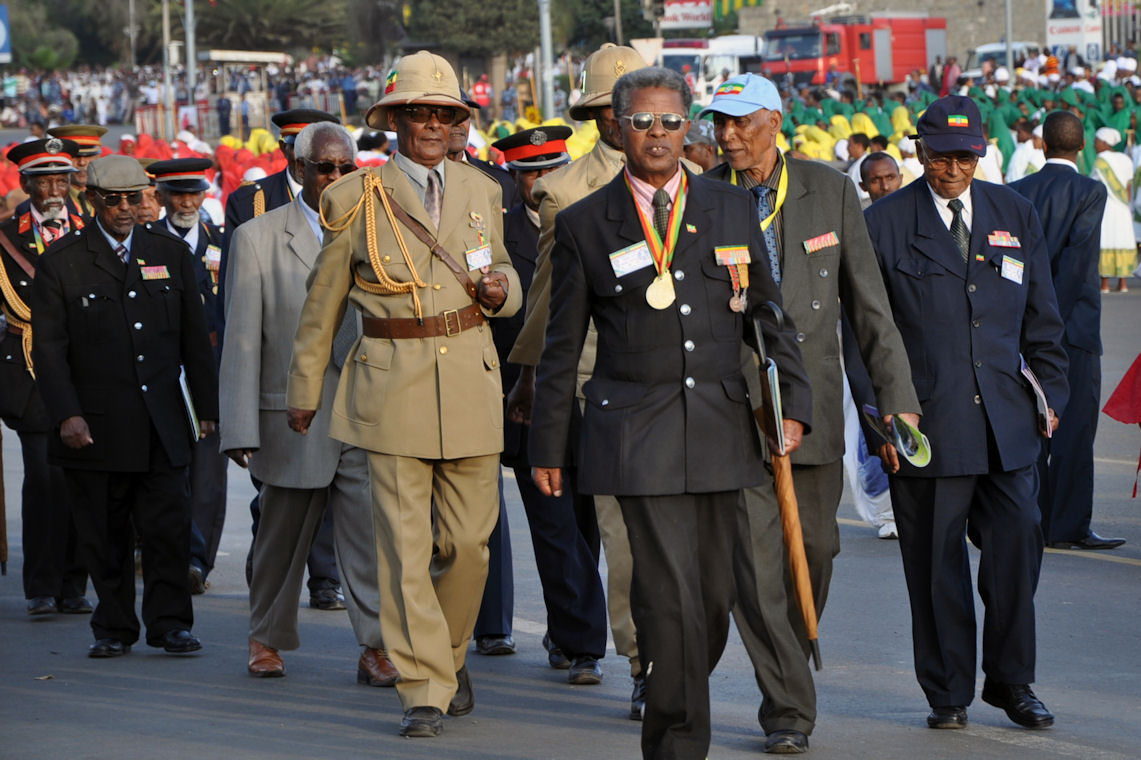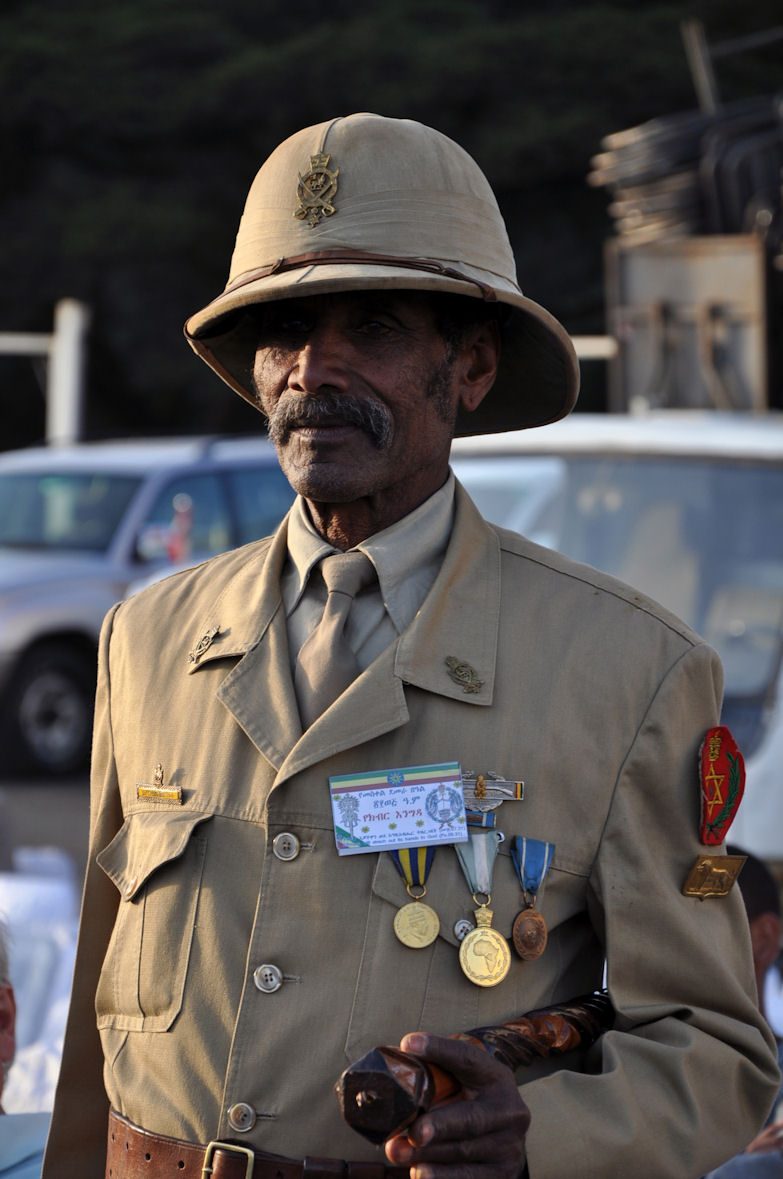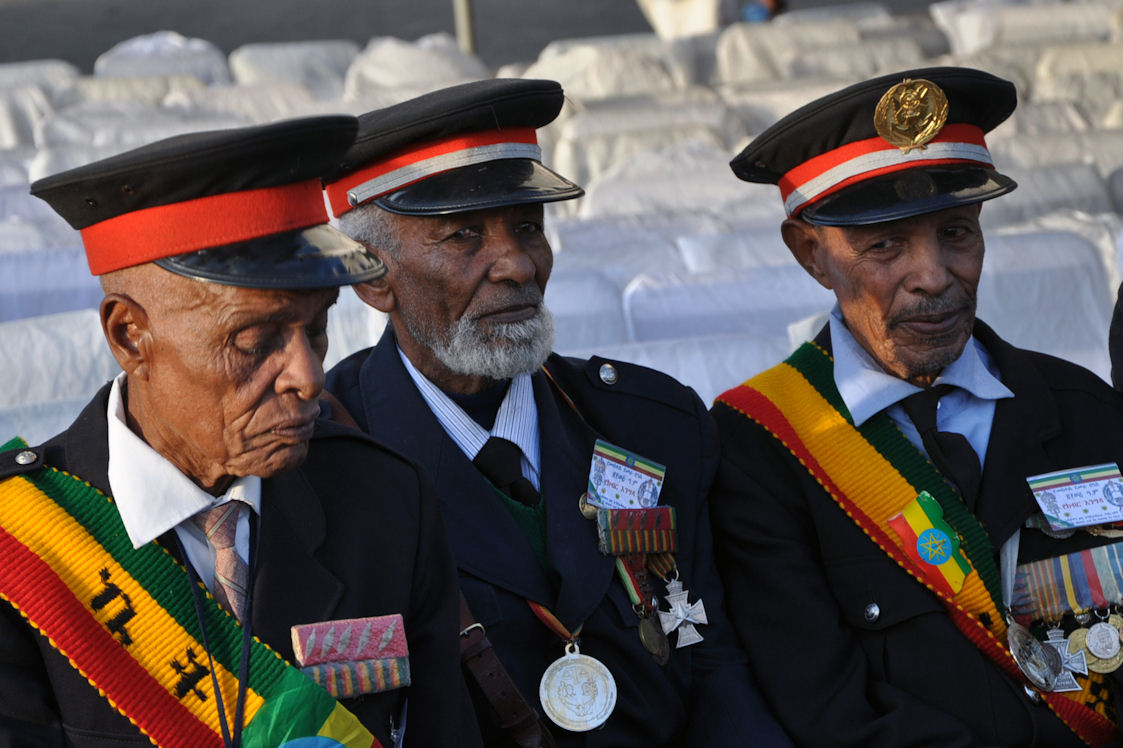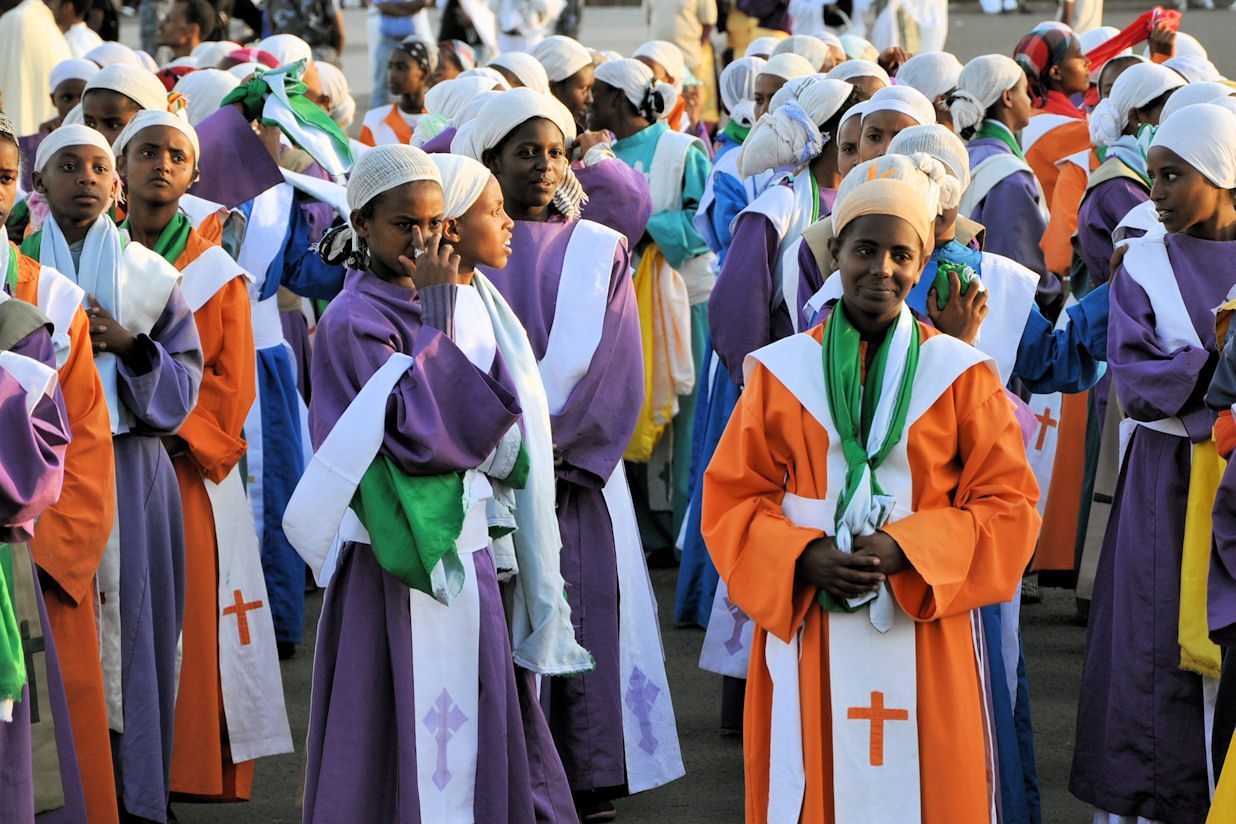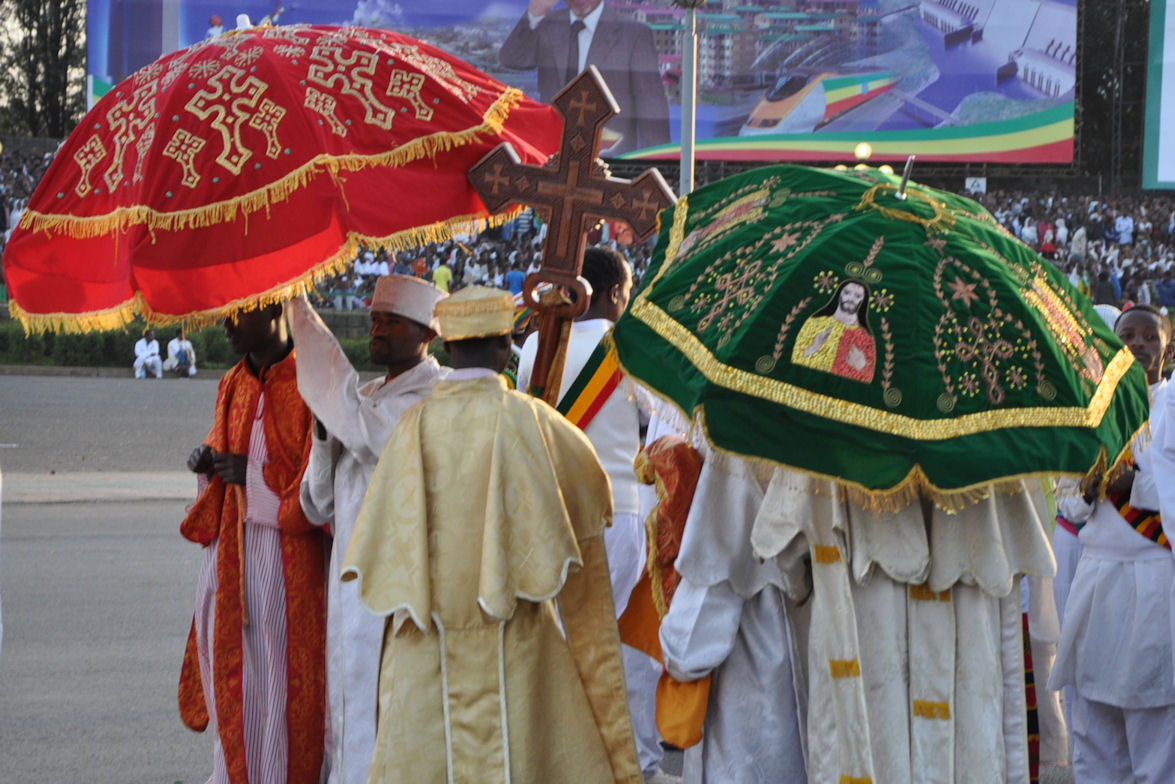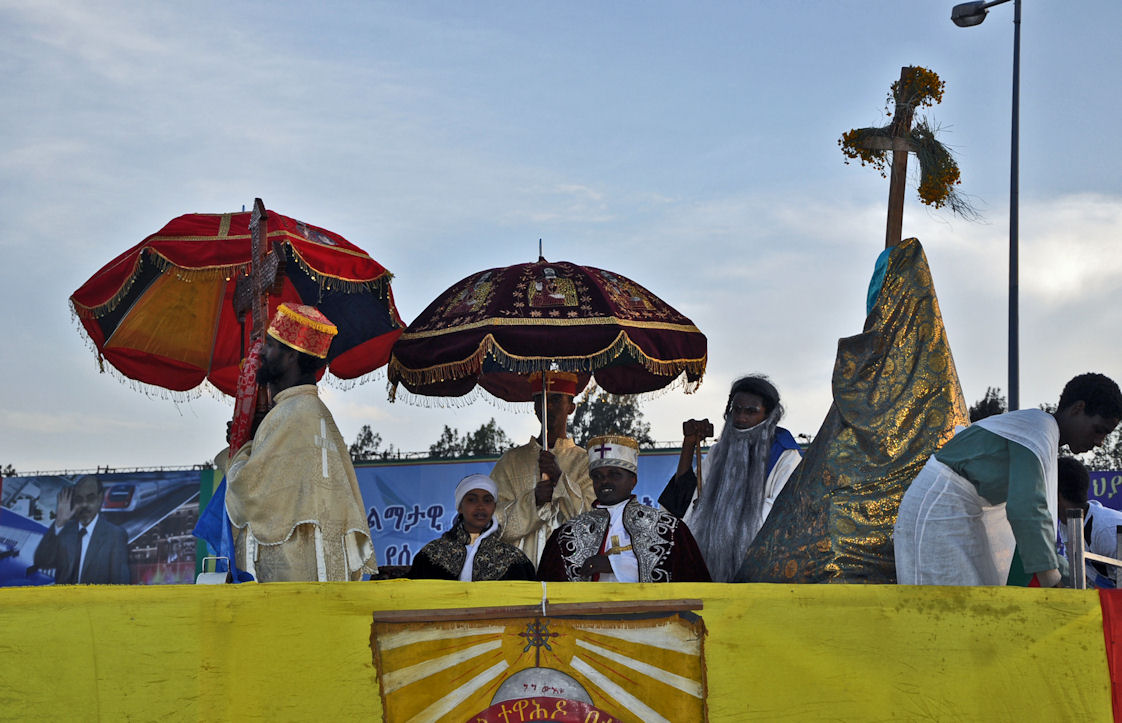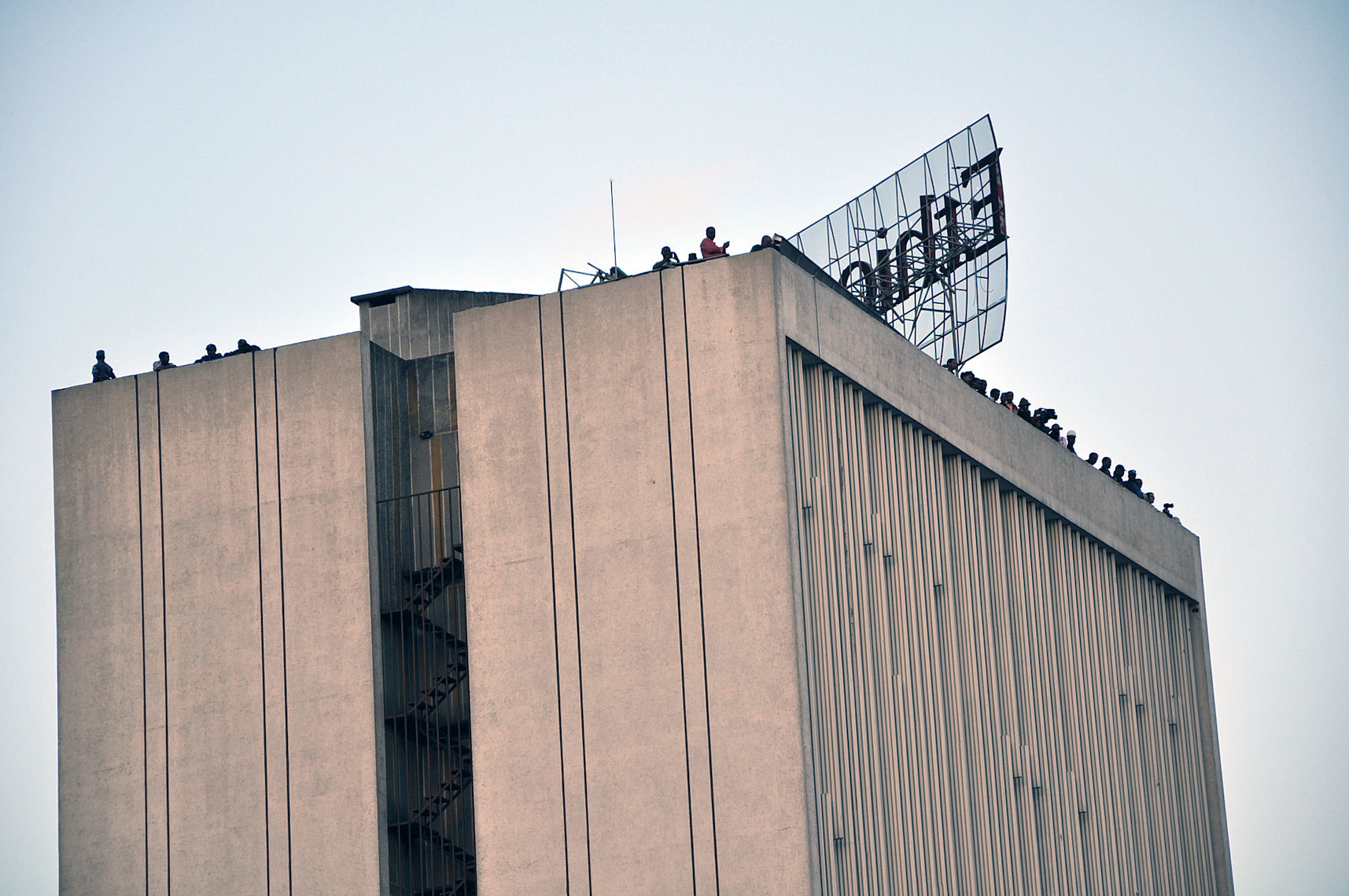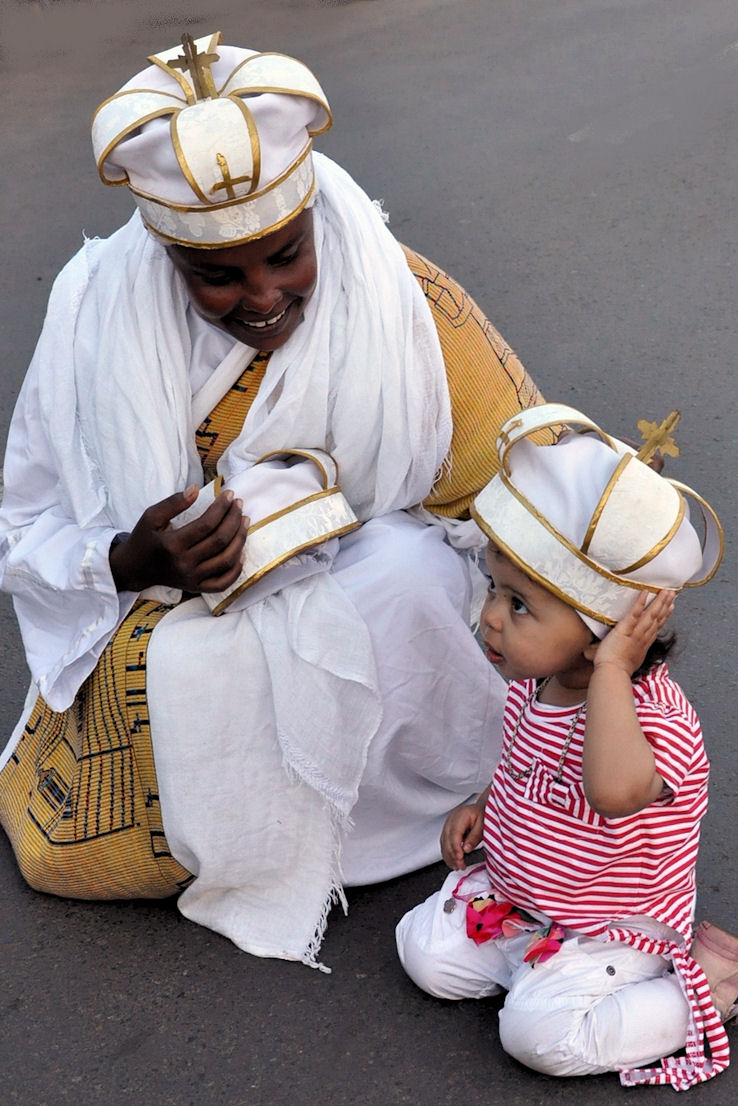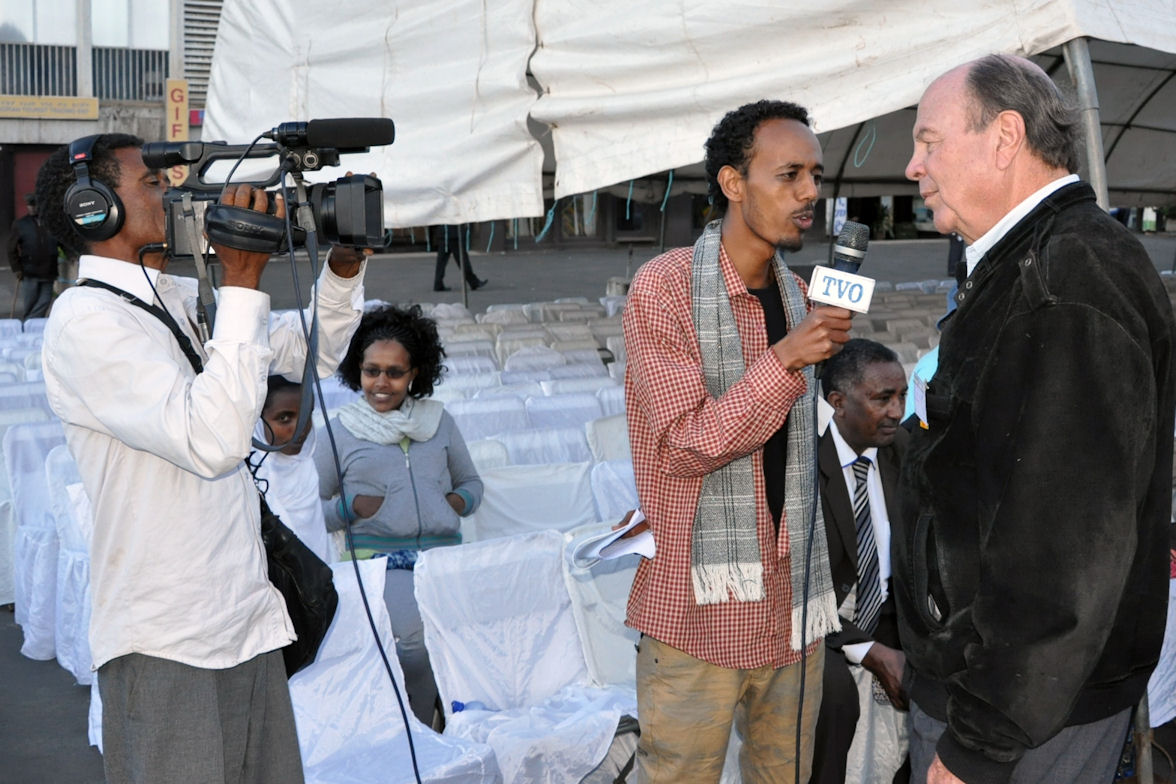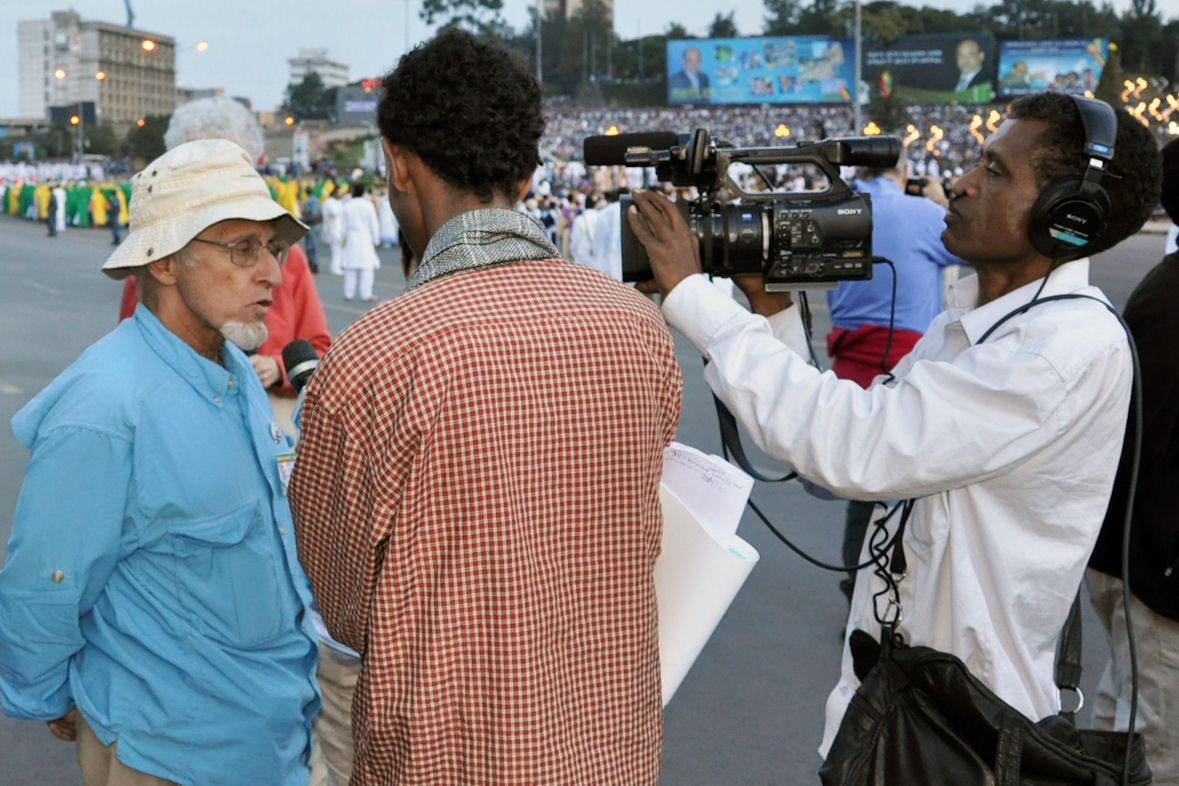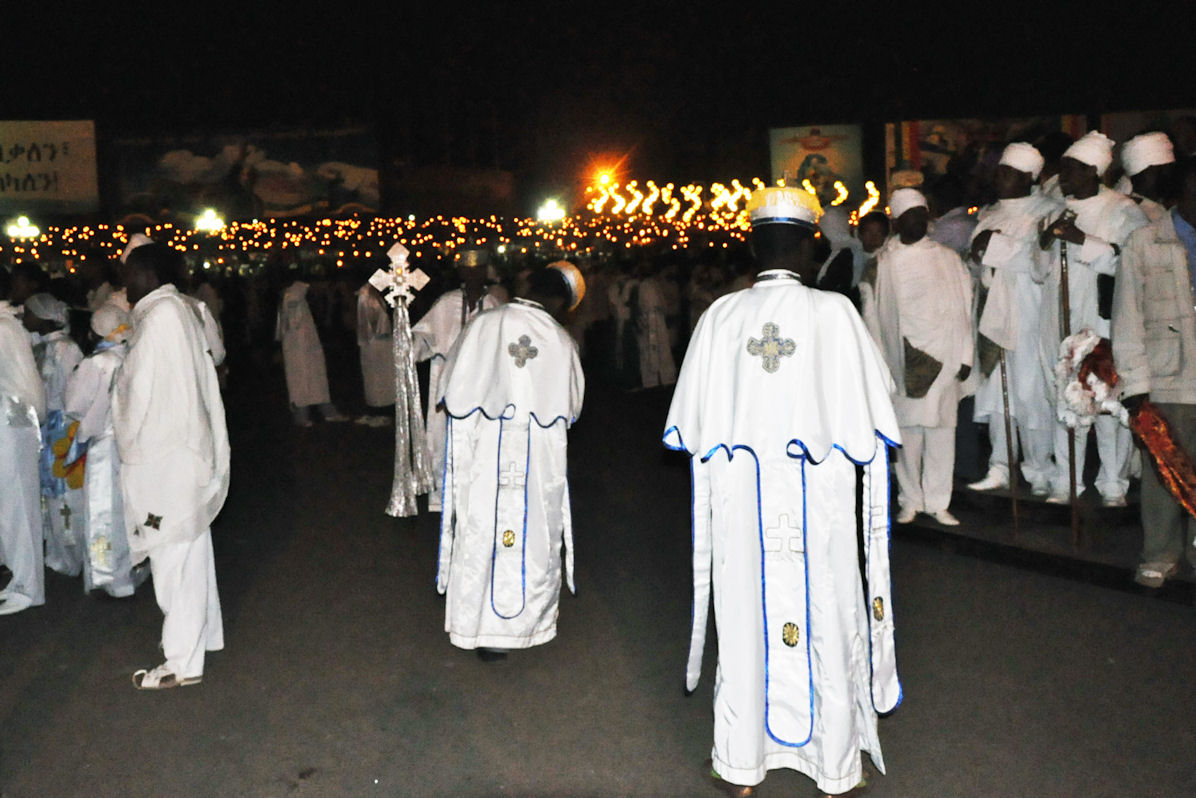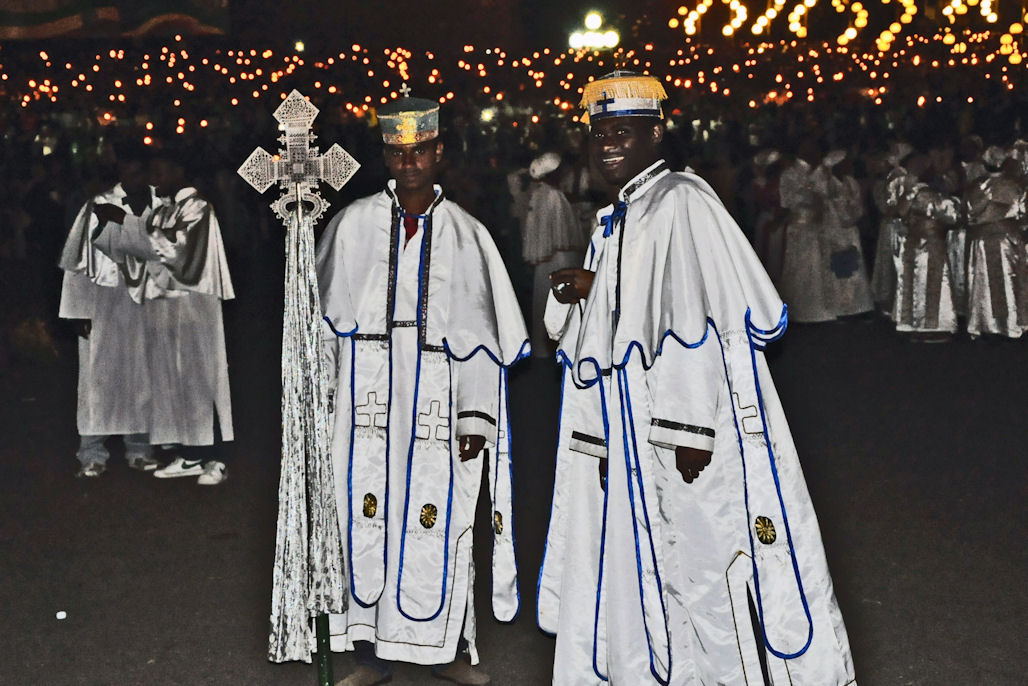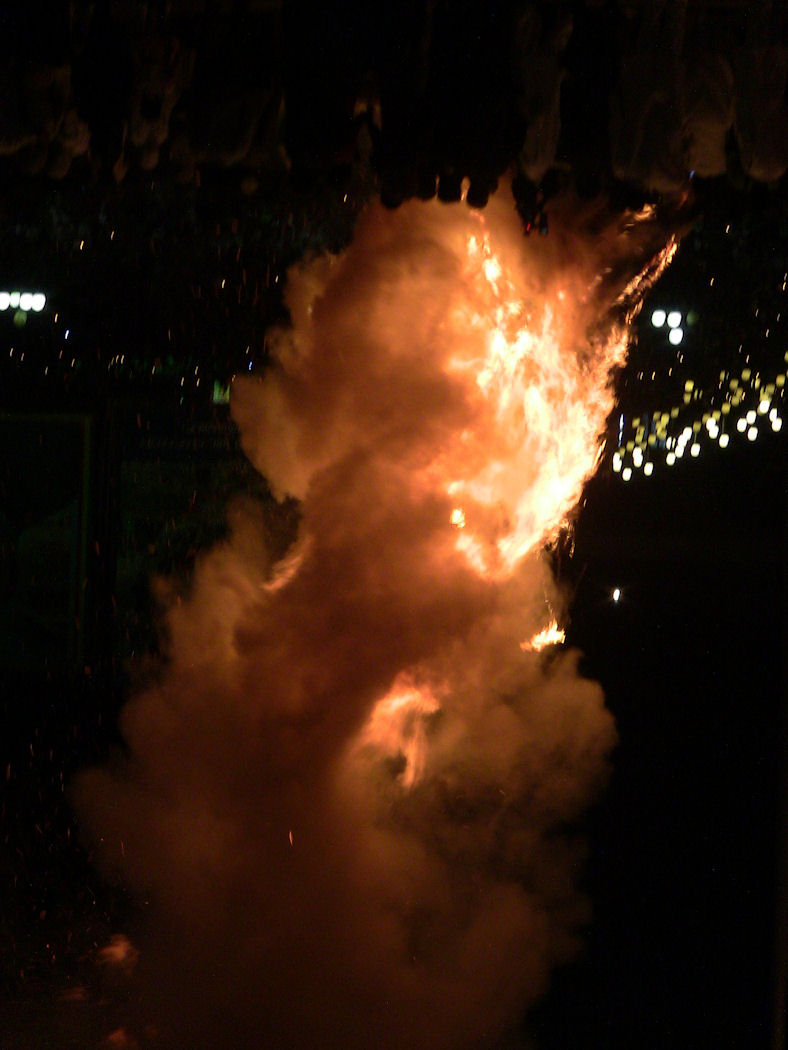While all the processions were enteringthe square, there was much praying and giving thanks. Later, a large bonfire in Meskel Square was lit by the Archbishop of the Orthodox Church. Afterwards, many families retired to their homes where smaller fires were lit. During the night and into the next day, a heavy smoke hung over the city. Many happy faces could be seen in the streets with much singing almost like a "New Year's" celebration in the U. S.
On Meskel Day, families had afternoon Dinners similar to our "Thanksgiving Day" in the U.S. While it is primarily a religious celebration, Meskel also celebrates the end of the long and depressing rainy season in Ethiopia and the beginning of the dry planting season there.
Meskel is an annual religious holiday commemorating the discovery of the True Cross by Queen Helena (Saint Helena) in the fourth century and is celebrated in the Ethiopian Orthodox Church. Meskel occurs on 17 Meskerem in the Ethiopian calendar (September 27, Gregorian calendar, or September 28 in leap years). "Meskel" is Ge'ez for "cross".
The Meskel celebration always concludes with the burning of a large bonfire, or Demera, based on the belief that Queen Eleni had a revelation in a dream. She was told that she shall make a bonfire and that the smoke would show her where the true cross was buried. So she ordered the people of Jerusalem to bring wood and make a huge pile. After adding frankincense to it the bonfire was lit and the smoke rose high up to the sky and returned to the ground, exactly to the spot where the Cross had been buried.
This Demera-procession takes place in the early evening the day before Meskel or on the day itself, according to local traditions. The firewood is decorated with "Meskel Daisies" prior to the celebration. Afterwards, charcoal from the remains of the fire is collected and used by the faithful to mark their foreheads with the shape of a cross (similar to Ash Wednesday).
One explanation for the high rank that this festival has in the church calendar is that it's believed that a part of the true Cross has been brought to Ethiopia from Egypt. It is said to be kept at Amba Geshen, which itself has a cross shape.
The most ancient meaning of these feasts, as was also the case in Israel, was no doubt seasonal: the month of Maskaram marked the end of the rains and the resumption of work."
(Important note: All photographs, except where mentioned, are copyrighted as of October 8, 2012, by Darrel and Betty Hagberg. Please request permission to use and please credit them).
